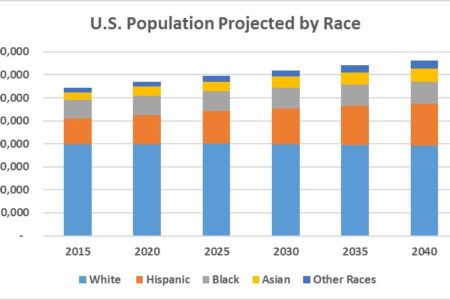
Share On Social!
Latino voter turnout held steady over the last two presidential elections, but declined sharply over the last two congressional elections, according to Census data.
A new campaign aims to reverse the decline as the next congressional election nears on Nov. 6, 2018
The Society for the Advancement of Chicanos/Hispanics & Native Americans in Science (SACNAS) and March for Science have teamed up to enable voter registration for its projected 4,000 attendees at the site of its 2018 National Diversity in STEM Conference.
The conference is set for Oct. 11-13, 2018, in San Antonio.
“We’re proud to partner with SACNAS and to offer voter registration and engagement at the 2018 SACNAS event, making it easy for all participants to take civic action,” said Dr. Caroline Weinberg, interim Executive Director of March for Science, in a press release.
STEM Students Aren’t Voting
Undergraduate students in the majors of science, technology, engineering, and mathematics (STEM) vote less frequently than any other major, according to a study by Tufts University’s Institute of Democracy and Higher Education.
SACNAS officials are concerned with this trend.
Scientists should vote to make their voice heard, given how science is increasingly ignored in political debate.
“Voices are stronger together,” said SACNAS Executive Director John D. Winnett, in a press release. “Our voter registration partnership with March for Science is a fitting tribute to our founder’s legacy of civic engagement and community visibility.”
Why the Latino Vote Matters
Currently, Latinos account for 18% of the U.S. population.
By 2035, 1 in every 4 people will be Latino.
But Latino voter turnout rate for presidential elections has held steady in recent years (47.6% in 2016, 48% in 2012).
Latino voter turnout for congressional elections has declined (21.1% in 2014, 26.6% in 2010).
“Due largely to demographic growth, the number of Latino voters grew to a record 12.7 million in 2016, up from 11.2 million in 2012,” according to Pew Research Center. “Even so, the number of Latino nonvoters – those eligible to vote who do not cast a ballot, or 14 million in 2016 – was larger than the number of Latino voters.”
 Many Latinos still face economic, social, and health inequities.
Many Latinos still face economic, social, and health inequities.
In fact, 60% of Latinos earn less than $15 per hour versus 39 percent of full-time workers overall, 78% of Latino children suffer from one or more adverse childhood experience such as poverty, neglect, or abuse, and 15.1% of Latinos lack health insurance as compared to 6.6% of non-Latino whites.
These situations may not change without increased civic engagement and voter participation from the Latino population.
Last year, the SACNAS conference drew 3,845 attendees, about half of whom were Latino. They gathered for a unique discussion of cutting-edge science, familia, motivation, and opportunity for students and scientists at all levels.
This year’s conference is expected to draw 4,000. Attendees will incude STEM leaders, scientists, academics, researchers, professionals and college students—and now potential registered voters.
“If we want to change the future, we need to advocate for science and hold our officials accountable every day. If you are eligible to vote, that includes voting for science in November,” Weinberg said.
By The Numbers
142
Percent
Expected rise in Latino cancer cases in coming years



